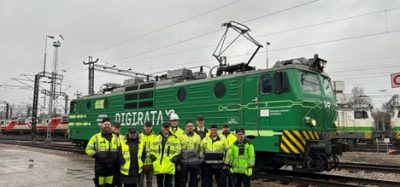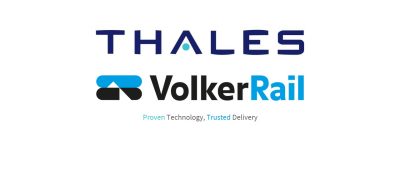Swiss ETCS implementation
Posted: 28 July 2006 | | No comments yet
ETCS has now become fully operational on one of Switzerland’s main lines. Since July 2006, ETCS Level 2 has been activated during the evenings to ensure the safe operation of revenue-earning services on the newly built Mattstetten–Rothrist route. At present, therefore, approximately 20 trains a day are being controlled by ETCS.
ETCS has now become fully operational on one of Switzerland’s main lines. Since July 2006, ETCS Level 2 has been activated during the evenings to ensure the safe operation of revenue-earning services on the newly built Mattstetten–Rothrist route. At present, therefore, approximately 20 trains a day are being controlled by ETCS.
ETCS has now become fully operational on one of Switzerland’s main lines.
Since July 2006, ETCS Level 2 has been activated during the evenings to ensure the safe operation of revenue-earning services on the newly built Mattstetten–Rothrist route. At present, therefore, approximately 20 trains a day are being controlled by ETCS.
From the end of 2006, all 240 trains operating on this route every day will be controlled by ETCS, and by mid-2007, ETCS Level 2 will also go into service in the new Lötschberg base tunnel. On the rest of the SBB network, ETCS is due to supersede the existing ZUB and SIGNUM train control systems by 2015. By becoming fully ETCS-compatible within the next ten years, Switzerland will have become a European leader in this field.
In April 2006, SBB’s Board of Directors approved the plans for the network-wide implementation of the interoperable European Train Control System (ETCS). The primary intention of this decision is to simplify network access and dispense with the current, expensive practice of fitting rolling stock with equipment for multiple systems. The basic decision to adopt ETCS was taken as early as 1996 as part of the Rail 2000 project. Train speeds of 200km/h and two-minute headways were already envisaged at that time on the Mattstetten–Rothrist line, which was then under construction. The target was to reduce journey times between Berne and Zurich or Basel to under an hour. Moreover, the close intervals between trains were designed to ensure good connections at hub stations.
It was these key requirements – higher speeds and shorter headways – that gave rise to the plan to evaluate a new train control system for Switzerland, as neither the existing trackside signals nor the two existing train control systems (SIGNUM and ZUB) permitted speeds of more than 160km/h. An in-cab signalling system whereby the driver receives the relevant information on a display on the instrument panel is essential for trains travelling at higher speeds. With European railways seeking to standardise their (currently very diverse) train control systems, it was clear that ETCS should be adopted.
SIGNUM and ZUB growing obsolete
For many decades now, SBB’s network has been controlled by a total of some 12,000 trackside signals equipped with the SIGNUM caution/stop signal system. As a train passes a signal SIGNUM warns its driver if the next signal is at danger or if the train has to reduce speed significantly. Moreover, SIGNUM will automatically apply the brakes if the driver fails to acknowledge its warning signal or passes a main signal at danger. Depending on the configuration, there is a risk with SIGNUM that a train may be forced to stop in the path of another train.
Following a series of accidents, SBB began in 1992 to upgrade network safety by installing the ZUB 121 train control system in specific areas. 2,500 higher-risk signals were equipped with this speed-monitoring system as back-up for SIGNUM. By constantly monitoring the permitted speeds (“braking curve supervision”) on specific sections of track (“blocks”), ZUB makes it possible – depending on the signal’s aspect – to stop trains before the danger zone.
All SBB’s mainline rolling stock is now fitted with both the SIGNUM and the ZUB systems. However, both systems are nearly life-expired. The Federal Office of Transport, the body in charge of Swiss rail supervision, is thus prescribing that both systems be replaced by ETCS in order to retain as much as possible of the existing equipment, which would then also ensure interoperability with the rest of Europe.
Implementation of ETCS across the whole network by 2015
A period of approximately ten years is envisaged for the replacement of ZUB and SIGNUM by ETCS. A number of important preparations have been taken in hand for implementation. By March 2005, for example, all ZUB rolling stock in Switzerland had been retrofitted with the ETM (EuroBalise Transmission Module) system. Rolling stock units are additionally equipped with ETM so that ZUB and SIGNUM information can be read from the trackside ETCS components (EuroBalise and EuroLoop).
Vehicles equipped with ETM meet the first-phase requirements for the network-wide implementation of ETCS. In this phase, the ZUB track coupling coils and SIGNUM magnetic transponders will be replaced by EuroBalises and EuroLoops, but will still use ZUB and SIGNUM data. Despite the change in data carrier, the information will stay the same. ZUB will then become EuroZUB and SIGNUM EuroSIGNUM. This step will already bring about marked improvements in availability and safety, as the EuroBalises are always used in pairs and feature active error reporting. Moreover, standardisation of components means that system diversity is reduced.
In the second phase, EuroBalises and EuroLoops will be programmed with ETCS information in addition to the ZUB and SIGNUM data. ETCS will then progress to Level 1LS (Limited Supervision) mode. Completion of phase two in 2015 will greatly simplify network access in Switzerland. From then on, vehicles will only require ETCS equipment in order to access the whole standard-gauge network. This will be a particular bonus when new rolling stock units are ordered, as they will no longer have to feature expensive multiple systems (ZUB, SIGNUM, ETM). It will still be possible for existing non ETCS-equipped vehicles to operate on Level 1LS routes, as the ETCS components transmit data for both ETM and ETCS.
ETCS Level 2 on new lines, Level 1LS on the rest of the network
Trains using the new Mattstetten–Rothrist line and the new Lötschberg, Gotthard and Ceneri base tunnels will be able to operate at speeds of over 160km/h. Since trackside signals are no longer properly visible to drivers approaching them at these speeds, in-cab signalling with ETCS Level 2 will be installed on these routes. ETCS Level 2 can only be used in conjunction with state-of-the-art electronic control centres. Should ETCS Level 2 be extended to existing lines and the major stations, signalling centres will have to be upgraded there too.
On the remainder of the network, ETCS Level 1LS will be integrated into the existing safety systems. Unlike Level 2, Level 1 does not provide in-cab signalling in Limited Supervision mode. Train drivers will continue to rely on trackside signals but will be supervised by the ETCS system running in the background. The absence of in-cab signalling means that much less data needs to be transmitted from track to vehicle, thus greatly simplifying planning work and track installations. Comparisons with the Level 1 Full Supervision systems installed in Austria and Luxembourg suggest that Limited Supervision will result in cost savings of over 50% in Switzerland.
Depending on safety requirements, decisions can be made on a signal-by-signal basis whether to install a simplified caution/stop system or whether speed supervision is required for the block. In this way, the risk-oriented safety principle established in Switzerland with ZUB can be transferred to ETCS without major modifications to existing control centres, cabling or trackside signals. Implementation will meet at least the safety standard already provided by the existing national train control system.
The integration of ETCS components improves safety and availability, as failure-proofing is substantially enhanced by comparison with today’s systems. Track capacity remains unchanged compared with existing national systems, and can be increased further by using infill elements (EuroBalise or EuroLoop) at specific points.
The Limited Supervision mode has not yet been incorporated into the ETCS functionality, but will be included in the next ETCS specifications (SRS3.0.0) for the benefit of various European railways.







